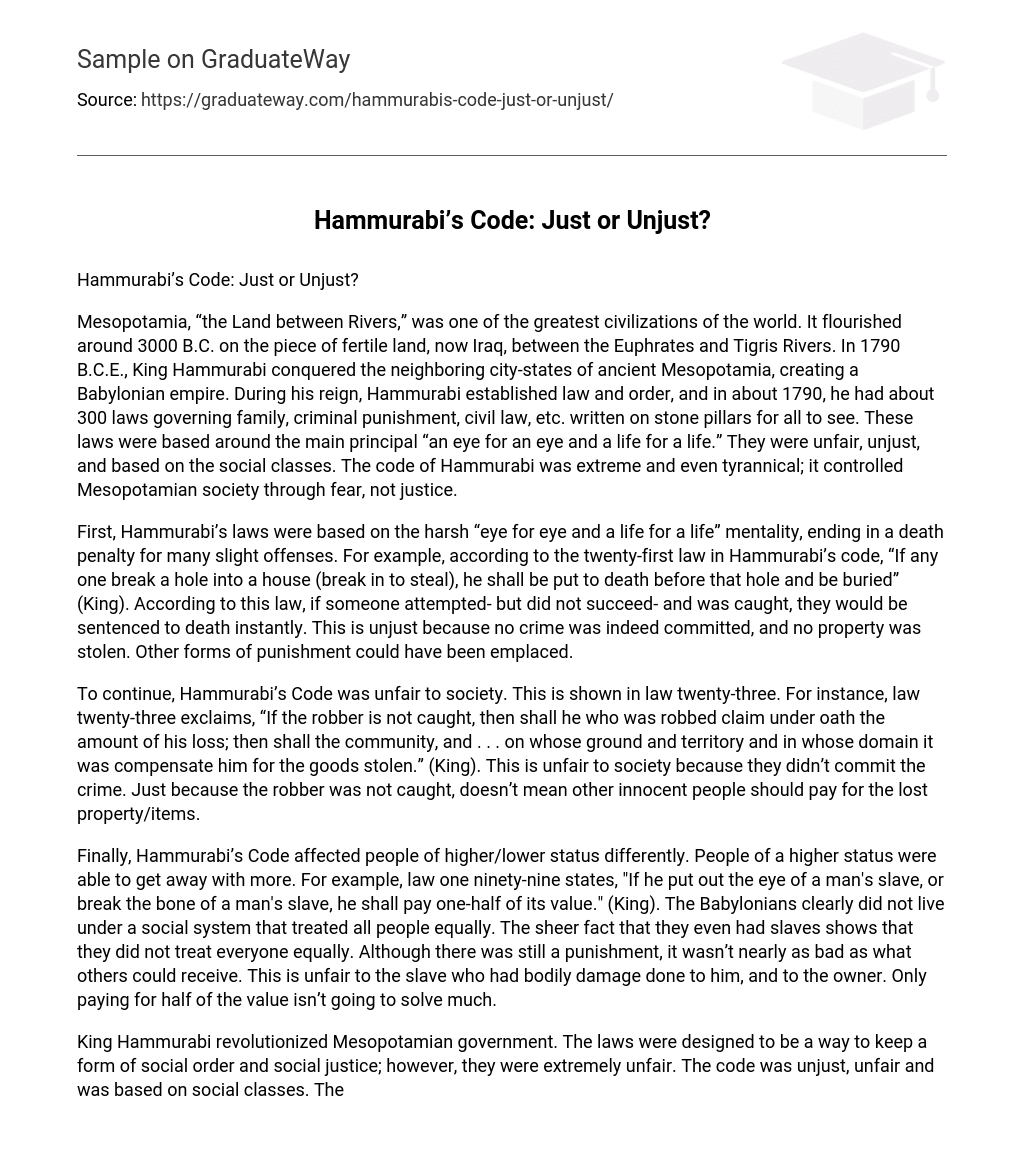Mesopotamia, known as “the Land between Rivers,” was a highly significant civilization in world history. Its prosperity began around 3000 B.C. in the fertile region now called Iraq, situated between the Euphrates and Tigris Rivers.
In 1790 B.C.E., King Hammurabi gained dominance over Mesopotamia’s ancient city-states, leading to the establishment of a Babylonian empire. Under Hammurabi’s rule, he established law and order by engraving around 300 laws on stone pillars for public display that same year.
These laws covered family matters, criminal punishments, and civil law. However, due to their influence from social hierarchy and excessively severe nature, they were seen as unfair and unjust.
In essence, Hammurabi used fear instead of justice to maintain control over society in Mesopotamia.
Hammurabi’s laws implemented a severe “eye for an eye and a life for a life” philosophy, frequently leading to the imposition of the death penalty for minor offenses. One example is found in the twenty-first law of Hammurabi’s code, which mandated execution and burial at the crime scene for anyone who unlawfully entered a house with theft as their intention. Consequently, even if an individual attempted but failed to break into a residence and was apprehended, they would still be subject to capital punishment. This approach lacks fairness since no actual crime occurred and no property was stolen; alternative penalties could have been employed instead.
Accordingly, Hammurabi’s Code demonstrated an unjust treatment towards society, as evident in law twenty-three. Specifically, law twenty-three states, “If the robber is not apprehended, then the victim may declare under oath the value of their loss; subsequently, the community and those responsible for the land where the theft occurred must repay the victim for the stolen goods” (King). This is an inequitable practice as innocent individuals should not be held accountable or burdened with compensating for stolen property solely because the perpetrator evaded capture.
Hammurabi’s Code had varying effects on individuals in society depending on their social status. Those with more power were able to avoid harsh consequences for their actions. For example, law one ninety-nine states, “If he put out the eye of a man’s slave, or break the bone of a man’s slave, he shall pay one-half of its value.” This reveals that Babylonian society did not treat all people equally. The presence of slaves itself is proof of this inequality. While there was still some punishment, it was much less severe compared to what others may face. This unequal treatment is unjust towards both the slave who experienced physical harm and the owner. Merely paying half of the value does not adequately address the issue at hand.
King Hammurabi brought about a significant change in the Mesopotamian government, introducing laws that aimed to maintain social order and justice. Nonetheless, these laws were highly biased and unjust as they favored specific social classes. The consequences for wrongdoing varied based on one’s societal status, often resulting in harsh and cruel punishment. Hammurabi’s Code marked the commencement of a new era focused on law enforcement and penalty.





